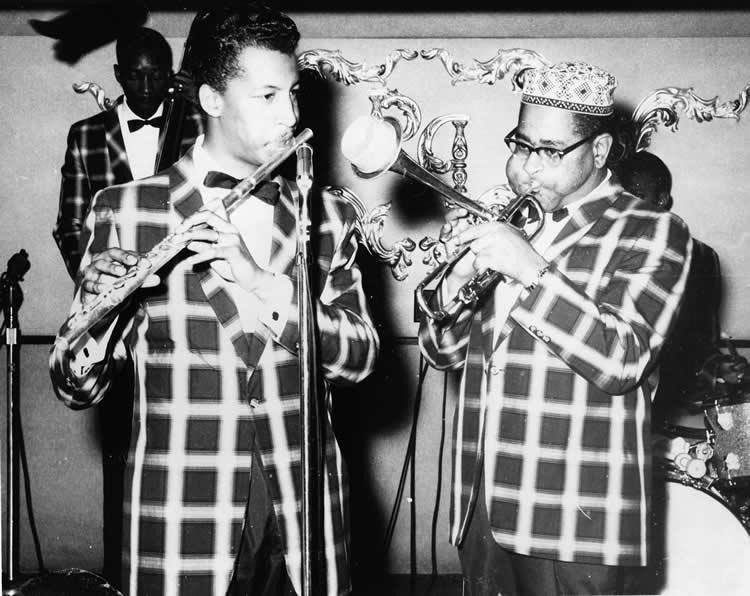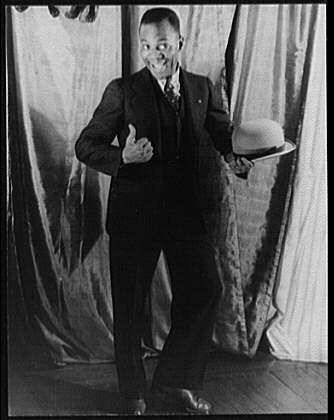History of Harlem Wikipedia the free encyclopedia
Post on: 15 Июль, 2015 No Comment

Contents
§ 1637–1865 [ edit ]
Before the arrival of European settlers, the area that would become Harlem (originally Haarlem) was inhabited by the Manhattans, a native tribe, who along with other Native Americans. most likely Lenape [ 1 ] occupied the area on a semi-nomadic basis. As many as several hundred farmed the Harlem flatlands. [ 2 ] The first European settlement in the area was by Hendrick (Henry) de Forest, Isaac de Forest, his brother, and their sister Rachel de Forest, Franco-Dutch immigrants in 1637. [ 1 ] in 1639 Jochem Pietersen Kuyter established the homestead named Zedendaal, or Blessed Valley. stretched along the Harlem River from about the present 127th Street to 140th Street. [ 3 ] [ 4 ] [ 5 ] Early European settlers were forced to flee to New Amsterdam in lower Manhattan whenever hostilities with the natives heated up, [ 6 ] and the native population gradually decreased amidst conflict with the Dutch. [ 1 ] The settlement was named Nieuw Haarlem (New Haarlem), after the Dutch city of Haarlem. and was formally incorporated in 1660 [ 7 ] under leadership of Peter Stuyvesant. [ 8 ] The Indian trail to Harlem’s lush bottomland meadows was rebuilt by black laborers of the Dutch West India Company. [ 9 ] and eventually developed into the Boston Post Road .
In 1664, the English took control of the New Netherland colony, and English colonial Governor Richard Nicolls established the Harlem Line as the southern border patent line of the village of Nieuw Haarlem (later, the village of Harlem) running westward from near modern East 74th Street. at the East River. [ 10 ] [ 11 ] [ 12 ] [ 13 ] The British also tried to change the name of the community to Lancaster, but the name never stuck, [ 14 ] and eventually settled down to the Anglicized Harlem. The Dutch took control of the area again for one year in 1673. [ 15 ] The village grew very slowly until the middle 18th century, and it became a resort of sorts for the rich of New York City. [ 16 ] Only the Morris-Jumel Mansion survives from this period.
Harlem played an important role in the American Revolution. The British had established their base of operations in lower Manhattan, and George Washington fortified the area around Harlem to oppose them. From Harlem, he could control the land routes to the north, as well as traffic on the Harlem River. The New York Provincial Congress met in White Plains, as did the convention drafting the constitution for New York State. [ 17 ] On September 16, 1776, the Battle of Harlem Heights. sometimes referred to as the Battle of Harlem or Battle of Harlem Plain. was fought in western Harlem around the Hollow Way (now West 125th St.), with conflicts on Morningside Heights to the south and Harlem Heights to the north. The American troops were outnumbered, 5000 to 2000, and were ill equipped compared to their opponents, but outflanked the British and forced them to retreat to the area around what is now West 106th Street. It was Washington’s first American victory. [ 18 ] Later that year, the British would avenge this defeat by chasing Washington and his troops north, then turning back and burning Harlem to the ground. [ 19 ]
In 1765, Harlem was a small agricultural town not far from New York City.
Rebuilding took decades, and infrastructure was improved much more slowly than was happening in New York City proper. [ 20 ] The village remained largely rural through the early 19th century and, though the grid system of streets, designed downtown, was formally extended to Harlem in 1811, it does not seem that anybody expected it would mean much. The 1811 report that accompanied the Commissioners’ Plan of 1811 noted that it was improbable that (for centuries to come) the grounds north of the Harlem Flat will be covered with houses. [ 21 ] [ 22 ]
Though undeveloped, the area was not poor. Harlem was a synonym for elegant living through a good part of the nineteenth century. [ 22 ] The village remained largely farmland estates, such as [Conrad] Van Keulen’s Hook, orig. Otterspoor, bordered north of the Mill Creek (now 108th St. orig. Montagne Creek at 109th St.), which flowed into Harlem Lake, to the farm of Morris Randall, northwest on the Harlem River. and westward to the Peter Benson, or Mill Farm. [ 23 ] This former bowery [of land] was subdivided into twenty-two equal plots, of about 6 to 8 acres (32,000 m 2 ) each, of which portions later owned by Abraham Storm, including thirty-one acres (east of Fifth Avenue between 110th & 125th St.) were sold by Storm’s widow Catherine in 1795 to James Roosevelt (great grandfather of President Franklin D. Roosevelt. 1760–1847). This branch of the Roosevelt family subsequently moved to the town of Hyde Park. but several of Roosevelt’s children remain interred in Harlem. [ 24 ]
As late as 1820, the community had dwindled to 91 families, a church, a school, and a library. Wealthy farmers, known as patroons , [ 22 ] maintained these country estates largely on the heights overlooking the Hudson River. Service connecting the outlays of Harlem with the rest of the City of New York (on the southern tip of the island of Manhattan) was done via steamboat on the East River, an hour-and-a-half passage, sometimes interrupted when the river froze in winter, or else by stagecoach along the Boston Post Road, which descended from McGown’s Pass (now in Central Park ) and skirted the salt marshes around 110th Street, to pass through Harlem.
The New York and Harlem Railroad (now Metro North ) was incorporated in 1831 to better link the city with Harlem and Westchester County. starting at a depot at East 23rd Street. and extending 127 miles (204 km) north to a railroad junction in Columbia County at Chatham, New York by 1851. Charles Henry Hall. a wealthy lawyer and land speculator, recognized the changes that this railroad would make possible in Harlem and began a successful program of infrastructure development, building out streets, gas lines, sewer lines, and other facilities needed for urban life. [ 25 ] Piers were also built, enabling Harlem to become an industrial suburb serving New York City. The rapid development of infrastructure enabled some to become wealthy, and the area became important to politicians, many of whom lived in Harlem. New York mayors Cornelius Van Wyck Lawrence and Daniel Tiemann both lived in Harlem in this period. For many in New York City, Harlem was at this time regarded as a sort of country retreat. [ 25 ] [ 26 ] The village had a population of poorer residents as well, including blacks, who came north to work in factories or to take advantage of relatively low rents.
Between 1850 and 1870, many large estates, including Hamilton Grange. the estate of Alexander Hamilton. were auctioned off as the fertile soil was depleted and crop yields fell. Some of the land became occupied by Irish squatters, whose presence further depressed property values. [ 22 ]
§ 1866–1920 [ edit ]

During the American Civil War. Harlem saw draft riots, along with the rest of the city, but the neighborhood was a significant beneficiary of the economic boom that followed the end of the war, starting in 1868. The neighborhood continued to serve as a refuge for New Yorkers, but increasingly those coming north were poor and Jewish or Italian. [ 26 ] Factories, homes, churches, and retail buildings were built at great speed. [ 27 ] The Panic of 1873 caused Harlem property values to drop 80%, [ 27 ] and gave the City of New York the opportunity to annex the troubled community as far north as 155th Street. [ 28 ]
Recovery came soon, and row houses (as distinct from the previous generation’s free-standing houses) were being constructed in large numbers by 1876. Development accelerated in part in anticipation of elevated railroads. which were extended to Harlem in 1880. With the construction of the els, urbanized development occurred very rapidly. Developers anticipated that the planned Lexington Avenue subway would ease transportation to lower Manhattan. Fearing that new housing regulations would be enacted in 1901, they rushed to complete as many new buildings as possible before these came into force. [ 29 ] Early entrepreneurs had grandiose schemes for Harlem: Polo was played at the original Polo Grounds. later to become home of the New York Giants baseball team. Oscar Hammerstein I opened the Harlem Opera House on East 125th Street in 1889. By 1893, even row houses did not suffice to meet the growing population, and large-scale apartment buildings were the norm. [ 30 ] In that year, Harlem Monthly Magazine wrote that it is evident to the most superficial observer that the centre of fashion, wealth, culture, and intelligence, must, in the near future, be found in the ancient and honorable village of Harlem.
However, also in that year, the construction glut and a delay in the building of the subway led to a fall in real estate prices which attracted immigrant Eastern Europe Jews and Italians to Harlem in accelerating numbers. There had been a Jewish community of 12 in Harlem in 1869 [ 31 ] that grew to a peak of almost 200,000 in about 1915. [ 32 ] Presaging their resistance to the arrival of blacks, existing landowners tried to stop Jews from moving into the neighborhood. At least one rental sign declared “Keine Juden und Keine Hunde ” (No Jews and no dogs). [ 33 ] Italians began to arrive in Harlem only a few years after the Jews did. By 1900 there were 150,000 Italians in Harlem. [ 32 ] Both groups moved particularly into East Harlem.
The Jewish population of Harlem embraced the City College of New York. which moved to Harlem in 1907. In the years after the move, 90% of the school’s students were Jewish, [ 34 ] and many of the school’s most distinguished graduates date from this period. Both the Jewish and Italian Mafia emerged in East Harlem and soon expanded their operations to the entire neighborhood. [ 35 ] West 116th Street between Lenox and 8th Avenue became a vice district. [ 36 ] The neighborhood also became a major center for more conventional entertainment, with 125th Street as a particular center for musical theater, vaudeville, and moving pictures. [ 37 ]
The Jewish presence in Harlem was ephemeral, and by 1930, only 5,000 Jews remained. As they left, their apartments in East Harlem were increasingly filled by Puerto Ricans, who were arriving in large numbers by 1913. [ 38 ] Italian Harlem lasted longer, and traces of the community lasted into the 1970s in the area around Pleasant Avenue.














